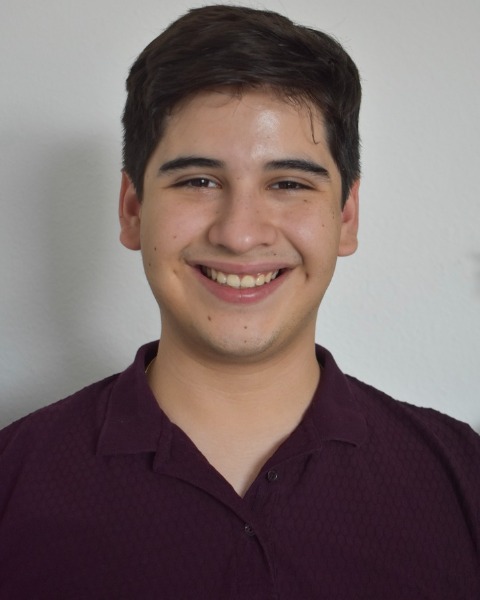Tissue Engineering
Development of an in-vitroModel with Controlled Stiffness to Study Adipogenesis
(K-423) Development of an in-vitro Model with Controlled Stiffness to Study Adipogenesis

Diego Valdes Cavazos
Undergraduate Research Assistant
University of Texas at San Antonio
San Antonio, Texas, United States- EB
Eric Brey
Department Chair
University of Texas at San Antonio, United States - LM
Linda Mota
Research Scientist Associate
The Univesity of Texas at San Antonio, United States - MP
Maria del Mar Prado Gutierrez
Doctoral Candidate
The University of Texas at San Antonio, United States
Presenting Author(s)
Primary Investigator(s)
Co-Author(s)
Materials and Methods::
For this, a mixture of acrylamide and bis-acrylamide is made using varying concentrations to make the hydrogels. The gels are then coated with collagen in preparation for cell attachment. Human and mouse adipose-derived stem cells were seeded in the different stiffness PA gels, to observe attachment on coated gels. The cells are then cultured for two weeks with media changes every other day to ensure cellular adaptation.
Results, Conclusions, and Discussions::
The Young Modulus was measured using the compression tester: Mach-1TM Mechanical Testing System. Analysis of the gels showed a consistent range of young modulus with the flexible gels having an average of 3.58 kPa and 7.29 kPa, and stiffer gels having an average of 76.03 kPa. Microscopic images showed human and mice ADSC were able to attach and grow on top of the coated gels of different stiffness. Preliminary findings show a higher expression of integrins adiponectin, UCP1, and PPRG by hADSC seeded in 7 kPa range gels. Further analysis must be performed in order to elucidate the effects on the differentiation of brown and white adipocytes with varying stiffness.
Acknowledgements (Optional): :
References (Optional): :
